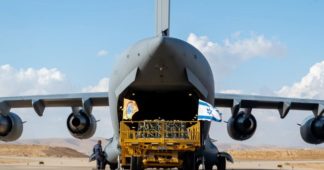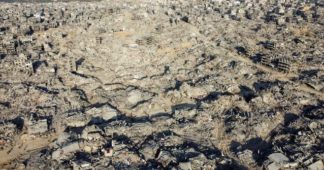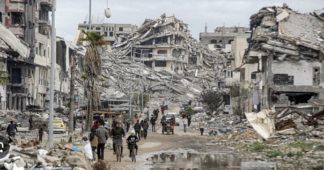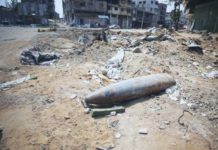Oct 24, 2025
Clearing the surface of Gaza of unexploded ordnance will likely take between 20 to 30 years, according to an official with aid group Humanity & Inclusion, describing the enclave as a “horrific, unmapped minefield”, Reuters reported.
More than 53 people have been killed and hundreds injured by lethal remnants from the two-year Israel-Hamas war, according to a UN-led database, which is thought by aid groups to be a huge underestimate.
A US-brokered ceasefire this month has raised hopes that the huge task of removing them from among millions of tons of rubble can begin.
“If you’re looking at a full clearance, it’s never happening, it’s subterranean. We will find it for generations to come,” said Nick Orr, an Explosive Ordnance Disposal expert at Humanity & Inclusion, comparing the situation with British cities after World War Two.
“Surface clearance, now that’s something that’s attainable within a generation, I think 20 to 30 years,” he added.
“It’s going to be a very small chipping away at a very big problem.”
Orr, who went to Gaza several times during the war, is part of his organisation’s seven-person team that will begin identifying war remnants there in essential infrastructure like hospitals and bakeries next week.
For now, however, aid groups like his have not been given blanket Israeli permission to start work on removing and destroying the ordnance nor to import the required equipment, he said.
COGAT, the arm of the Israeli military overseeing Gaza aid, did not immediately respond to a request for comment. It blocks items into Gaza which it considers have “dual use” – both civilian and military.
Orr said it was seeking permission to import supplies to burn away bombs rather than detonate them, to ease concerns about them being repurposed by Hamas.
He voiced support for a temporary force such as one foreseen in the 20-point ceasefire plan.
“If there is going to be any kind of future inside of Gaza, there needs to be an enabling security force that allows humanitarians to work,” Orr said.
.
We remind our readers that publication of articles on our site does not mean that we agree with what is written. Our policy is to publish anything which we consider of interest, so as to assist our readers in forming their opinions. Sometimes we even publish articles with which we totally disagree, since we believe it is important for our readers to be informed on as wide a spectrum of views as possible.











